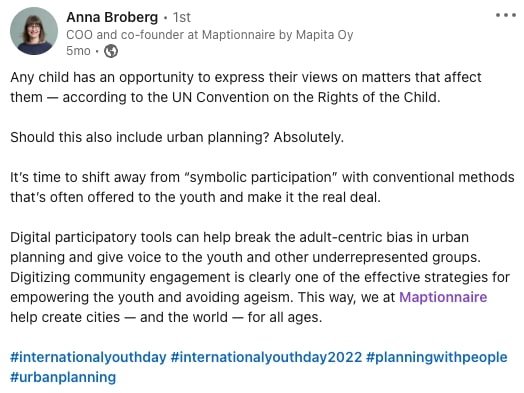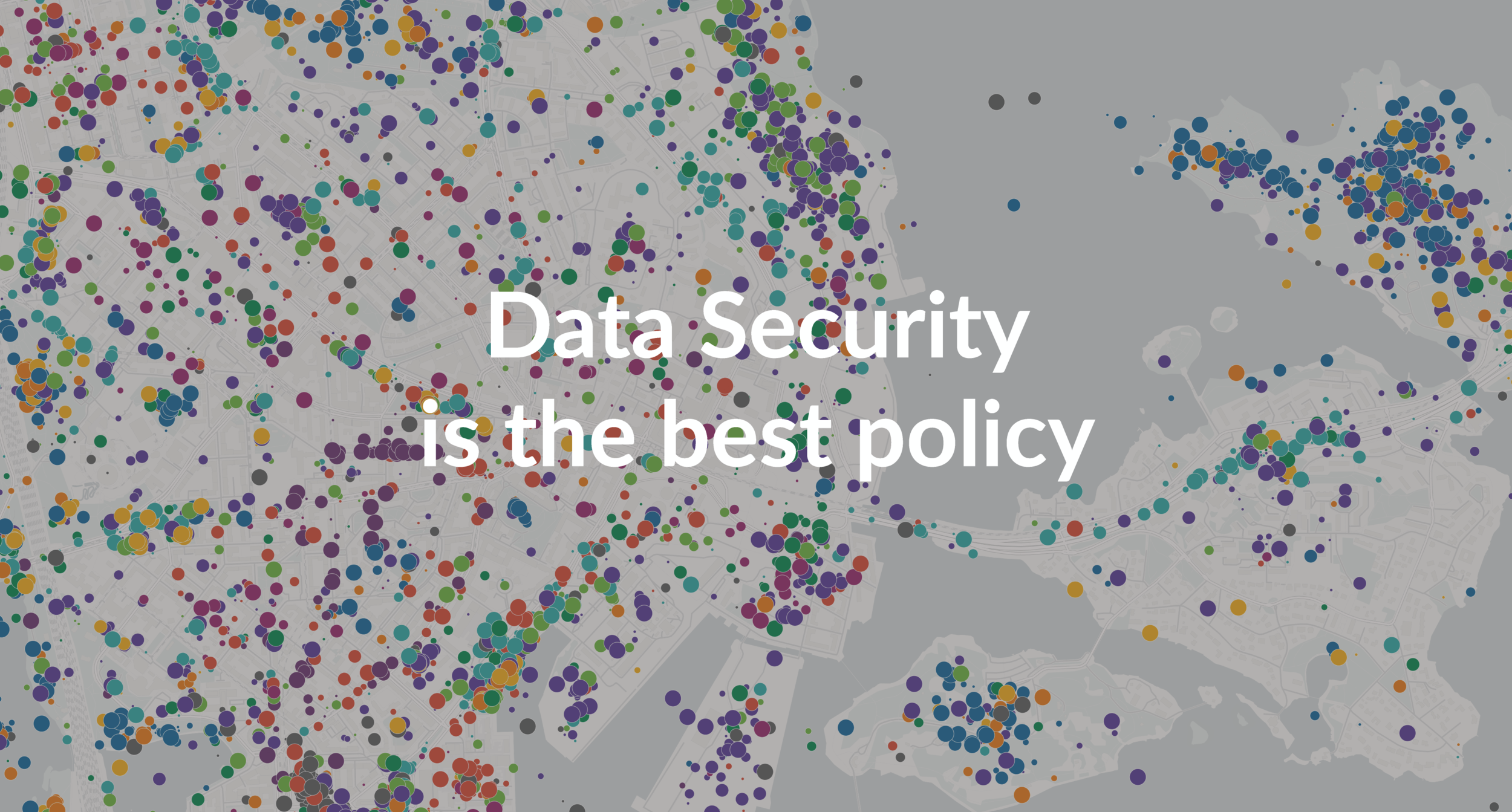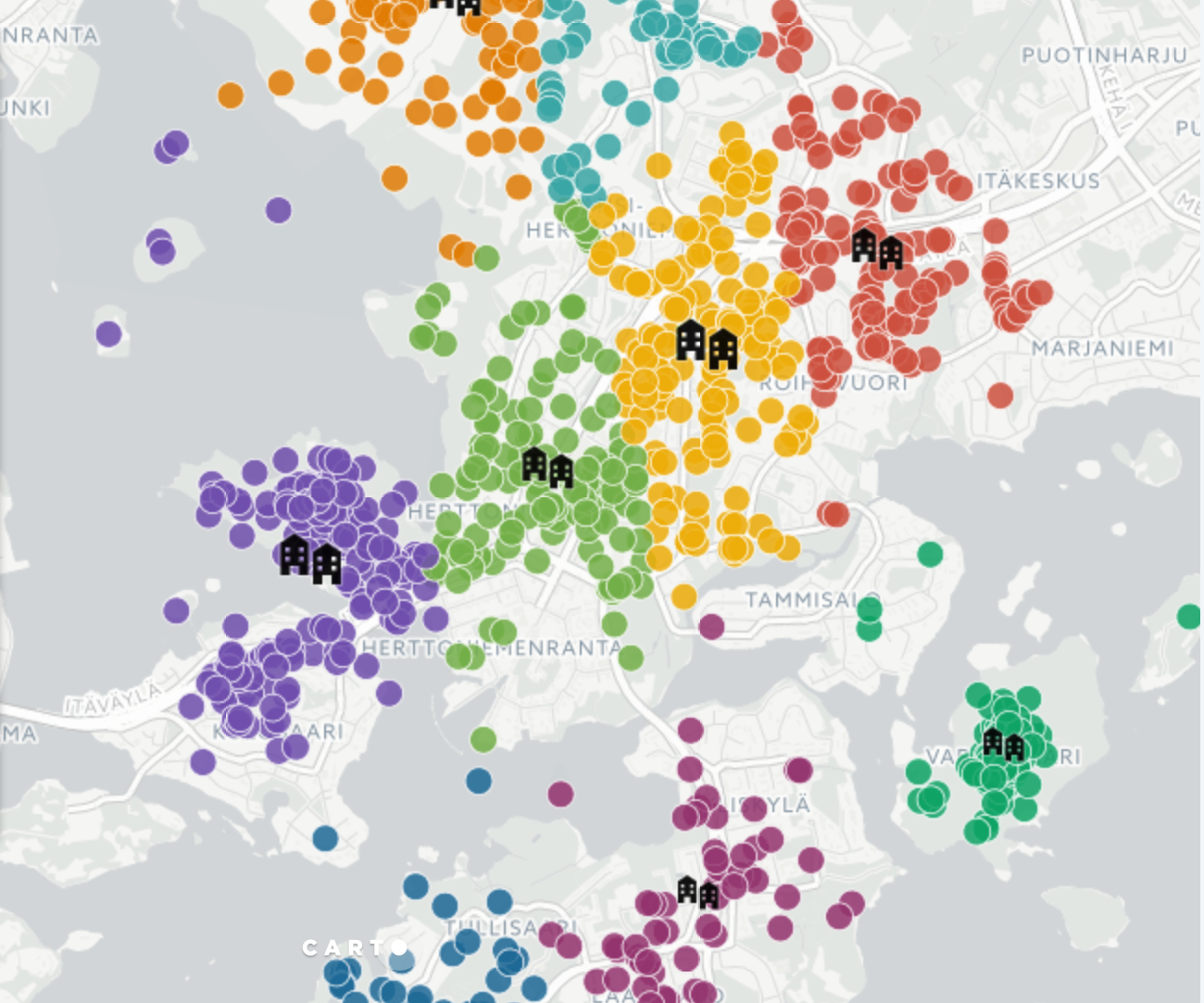As we have just landed in the year 2023, what community-engagement-trends are ahead?
Anna Broberg and Maarit Kahila, the co-founders of Maptionnaire, have been working at the intersection of public participation and urban planning for more than a decade. Here they’ve shared their thoughts and observations of community-engagement-trends in 2023!
1. Community Engagement for Climate Change Mitigation
Cities must proactively respond to climate change — by offering renewable energy solutions and improving efficiency of the existing energy infrastructure. Among other sustainability goals are decarbonizing transportation and the built environment.
To design these successful solutions, city governments and planners need to bring residents on board. More and more energy transition and urban planning projects will require community engagement at all stages — from collecting evidence to getting public project approval and gathering maintenance feedback.
Another side of climate change is environmental injustice. By proactively engaging vulnerable people in the planning and decision-making process, planners will ensure their projects are equitable and resilient.
Copenhagen’s effort of creating an EV charging infrastructure together with city residents and stakeholders is a good example of using community engagement tools for climate action.
2. Increasing Livability in Urban Areas by Involving Residents in Participatory Processes
The rapid growth of the urban population poses another challenge for cities: the built environment has to rapidly expand to accommodate urbanization while remaining sustainable, liveable, and lovable. Also, cities need to attract the best talent and businesses, and the quality and citizen-centricity of the built environment have a say in it as well.
It’s clear that planners will be involving more and more residents into participatory processes to ensure that urban developments fit people’s needs and preferences. At the same time, elitist public hearings and consultations “behind closed doors” won’t be enough. Planning needs to become transparent and citizen-centered.
Community engagement platforms enable planners to engage large numbers of residents and stakeholders — with speed and transparency.

3. Transparency, Accountability, and Cost Efficiency
The times of one-off participation are over — it’s vital to build a relationship with residents (why? see the two trends above). To achieve transparent communication, residents and stakeholders need to recognize community engagement as an effective tool for making tangible changes to the living environment. They need to know why their input is used and how their participation influences project outcomes. So planners have to find a way to close the feedback loop.
In reality, over the past decades, planners rarely report on how participatory processes affect their drafts and final planning decisions. Partly because projects take years and decades to implement and partly because engagement results are not available as easy-to-use data.
Also, in the face of the current recession and further global economic crisis, leaders will demand more accountability on expenditures, especially in the public sector.
- How to measure community engagement? How successful and impactful it was?
- What are the economic and societal outcomes of community engagement?
- What’s the ROI of choosing a community engagement platform instead of sticking to existing practices?
Planners will be on the lookout for an engagement solution that generates actionable and reportable data. Here, PPGIS solutions like Maptionnaire prove to increase the impact of participation on planning outcomes.
In his study on the use of PPGIS in FInland, Valtteri Nurminen has found out that planners using Maptionnaire are able to report how public participation knowledge influenced the final planning decisions. They could provide specific examples of community insights impacting the planning outcome.
4. Turning Smart Cities into Smart Communities
While the fascination with smart city technologies continues, smart communities will be playing an ever stronger role in this field. Civictech and govtech solutions that nurture empowered, just, and connected communities will get a solid spot in many smart city toolkits.
“A smart city is a smart community, and it’s all about people working together.”
Johanna Palomäki and Maarit Kahila — learn more on smart community engagement in Bable Smart in the City podcast.
That’s why community engagement will be used not only by planners but in other departments in the city administration. And once opinions and preferences gathered from residents are digitized, this data is much easier to share across departments to avoid silos.
Vantaa is a pioneering example of city-wide community engagement digitalization. It implements a city-wide engagement portal where residents can find opportunities to participate in all spheres of urban life, from health and daycare to city planning and arts & culture.
5. Early Engagement for Minimizing Planning Conflicts
We really see a shift in mindset — planners know the benefit of talking to people throughout the planning process (and not just because they have to do so to conform to legal requirements). They do so especially at the early stage of a project: to understand the value of spaces, get useful data, outline development priorities, and establish early communication.
There is another benefit to early engagement in which planners will be dipping more and more — it increases the subsequent buy-in of a planning project and reduces the chances of a project getting stuck at the public hearing stage.
Typically, if people are presented with ideas and plans to comment on that are “too ready”, they feel that they don’t really have a say in the matter. As if things have already been decided and are ready to be implemented. Running participation activities already in the early stages of the planning process will become a staple.
And even if it comes to a planning conflict, community engagement can help in solving it. In Espoo, for example, once the planners realized that the locals were opposed to a project, they invited residents to co-create a solution through a participatory budgeting process.
6. GIS-backed Community Engagement
Planning is spatial by default, and so should be community engagement in planning projects. Unfortunately, we still see a huge discrepancy between the data and materials planners work with and the information generated during public engagement, even if done digitally. For example, we’ve seen planners manually copying resulting data entries, one by one, from an engagement platform into their planning systems.
Making community engagement more spatial to match planning needs is definitely the future. As well as ensuring that planners can use the engagement data in other planning software!
That’s why Maptionnaire is a location-first community engagement platform that produces GIS datasets and enables planners to make GIS-backed decisions. Map-based surveys allow planners to work with a low-threshold method that empowers the wider public to participate in the planning of cities and results in spatial data that contains the views, hopes, and worries of local inhabitants.
7. Youth Involvement
The year 2022 was a European Year of Youth for a reason: to put the youth in the spotlight of policymaking and engagement. Even though 2022 is over, we are certain that youth engagement will continue to dominate the agendas. It’s the younger generations who are living with the consequences of climate change, urbanization, energy transition, and current planning decisions. So the youth has to be proactively included in the decision-making process.
While some mechanisms for youth involvement are in place, there will be more avenues and participation opportunities. But we have to be conscious of youth washing and tokenism.

Takeaway
- In the coming years, planners will be adopting new ways of working with residents that are transparent and accountable.
- They will be adopting new digital technologies that promote social cohesion, inclusion, and community empowerment.
- Also, community engagement will be open to new areas of application, such as sustainability, smart city solutions, health and wellbeing, and energy transition.
- We’re happy to see a fundamental change in the approach to community engagement: planners and local governments recognize locals as experts in their urban and rural environments. Planners and developers proactively engage with residents and stakeholders and value the data received during the participation process.
- At the same time, people themselves are more conscious, responsible, and enthusiastic about community engagement. They understand why they need to have a say and they have the means to make their voice heard.







.webp)

.jpeg)
-min.jpeg)
.jpg)



















.jpeg)
























.jpeg)


.jpeg)










.jpeg)
.jpeg)
.jpeg)




.jpeg)










